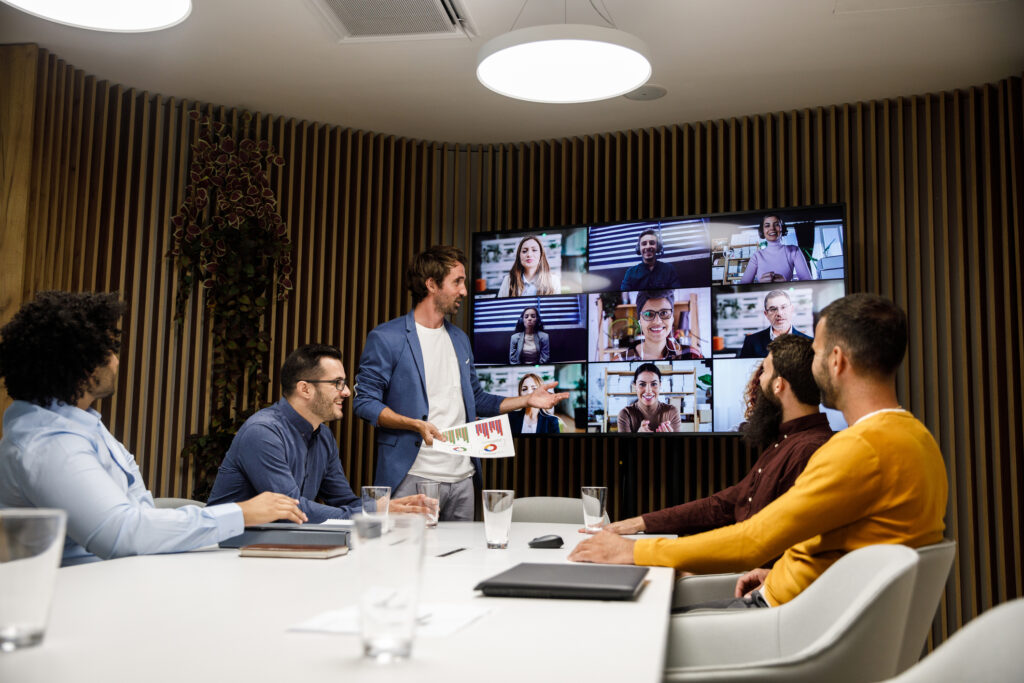Building culture and connection in your hybrid team

Building culture and connection in your hybrid team
5 minutes
A lot of organisations are ditching the traditional workspace arrangement and transitioning to the hybrid setup because of its many benefits. For one, hybrid work leads to better employee satisfaction and lower attrition rates.
However, one of the downsides of this paradigm shift is a weakened culture. Some employees are finding it challenging to integrate within the hybrid team. Young employees, in particular, feel that they are missing out on growth and mentorship opportunities, as well as socialisation. Business leaders and employees are both suffering the effects of this cultural shift, grappling with the unintended consequences of a more dispersed and digitally connected workforce.
As more companies switch to remote and hybrid work arrangements, stakeholders and leaders need to be ready for a strategic cultural shift. The traditional notions of team dynamics, collaboration, and leadership are changing, you need to re-evaluate your organisational culture to make sure it aligns with the demands of the hybrid era.
One of the key ingredients to building a successful team is connection. When every team member feels connected team, they provide genuine care and mutual support, as manifested in seamless collaboration and shared goals. This connection generates a positive ripple effect throughout the team, creating a culture of belonging and camaraderie that makes people motivated. Beyond the intrinsic satisfaction, a connected team proves to be a strategic asset for business.

Creating a culture of connection is not rocket science, but it does come with a lot of challenges that most leaders are not sure how to deal with.
One of the cultural issues of hybrid teams is the potential for a disconnect among team members who work in different physical spaces. People who are not in the office will miss out on spontaneous opportunities to learn about what is going on, such as hallway conversations or running into colleagues in the work café. The lack of face-to-face interactions can lead to communication gaps, so leaders need to implement strategies to bridge this divide. It is also just as important to maintain a consistent organisational culture to ensure that everyone aligns with the company’s values and goals.
To mitigate the impact of disconnection, leaders can leverage technology to facilitate regular virtual meetings, ensuring that team members have opportunities for face-to-face interactions, even if only through a screen. Creating virtual spaces for informal conversations, such as virtual coffee breaks or casual chat channels, can help replicate the spontaneous interactions that contribute to a connected and collaborative team culture.
The absence of strong interpersonal connections can lead to a lack of clarity regarding individual roles and responsibilities. Team members may not fully understand how their contributions align with overall team objectives, resulting in a diminished sense of accountability. Clear communication and a shared understanding of expectations are crucial elements often missing in disconnected teams.
Plus, the absence of regular communication and feedback makes it difficult to track progress, identify potential roadblocks, and address performance issues promptly. This lack of visibility can erode individual accountability, as team members may feel their efforts are not adequately recognised or valued.
Promoting regular communication, virtual team-building activities, and creating opportunities for informal interactions can help mitigate this issue of accountability. And leaders play a critical role in setting expectations, providing clear guidelines, and ensuring that every team member feels valued and connected to the broader goals of the team and organisation.
In traditional office settings, socialisation often occurs naturally through casual interactions, impromptu conversations, and shared moments during breaks. But in hybrid teams, employees find it hard to develop social connections, especially for new hires.
Those working from different locations may miss out on the informal bonding experiences that typically take place within the office environment. This lack of proximity can lead to a sense of detachment and may impede the development of strong interpersonal relationships needed for effective collaboration.
Leaders will need to step up and encourage people to build their networks. Incorporating time for casual conversations at the beginning or end of virtual meetings can also contribute to a more relaxed and sociable team dynamic.

Building positive relationships and fostering a culture can be tough for hybrid teams. Here are some ideas to start with:
- Virtual Social Events – Organise regular virtual social events or happy hours where team members can gather informally. This can include online games, trivia, or even casual discussions about non-work-related topics. Creating a relaxed and enjoyable virtual space fosters connections outside the formal work context.
- Team Challenges and Initiatives – Implement team challenges or initiatives that encourage collaboration and interaction. This could be a fitness challenge, book club, or a collective goal-setting activity. These shared endeavours create common ground and build a sense of camaraderie among team members.
- Employee Resource Groups – Establish employee resource groups or affinity groups based on common interests, hobbies, or demographics. These groups provide an avenue for like-minded individuals to connect, share experiences, and form meaningful relationships beyond work tasks.
- Online Collaboration Platforms – Leverage online collaboration platforms that facilitate casual interactions. Platforms, like Slack and and Teams Chat, have features that create spaces for spontaneous conversations, mimicking the impromptu interactions that happen in a physical office.
- Recognition and Appreciation – Encourage a culture of recognition and appreciation within the team. Regularly highlight individual and team achievements, birthdays, or work anniversaries. Public acknowledgment fosters a positive and connected atmosphere.
- Feedback and Input Sessions – Create structured feedback or input sessions where team members can voice their opinions, share ideas, or discuss concerns. Actively seeking input fosters a sense of inclusion and demonstrates that individual perspectives are valued.
By incorporating a combination of these approaches, leaders can establish diverse opportunities for connection, creating a more vibrant and closely-knit team culture in both hybrid and remote work environments.

Hellomonday